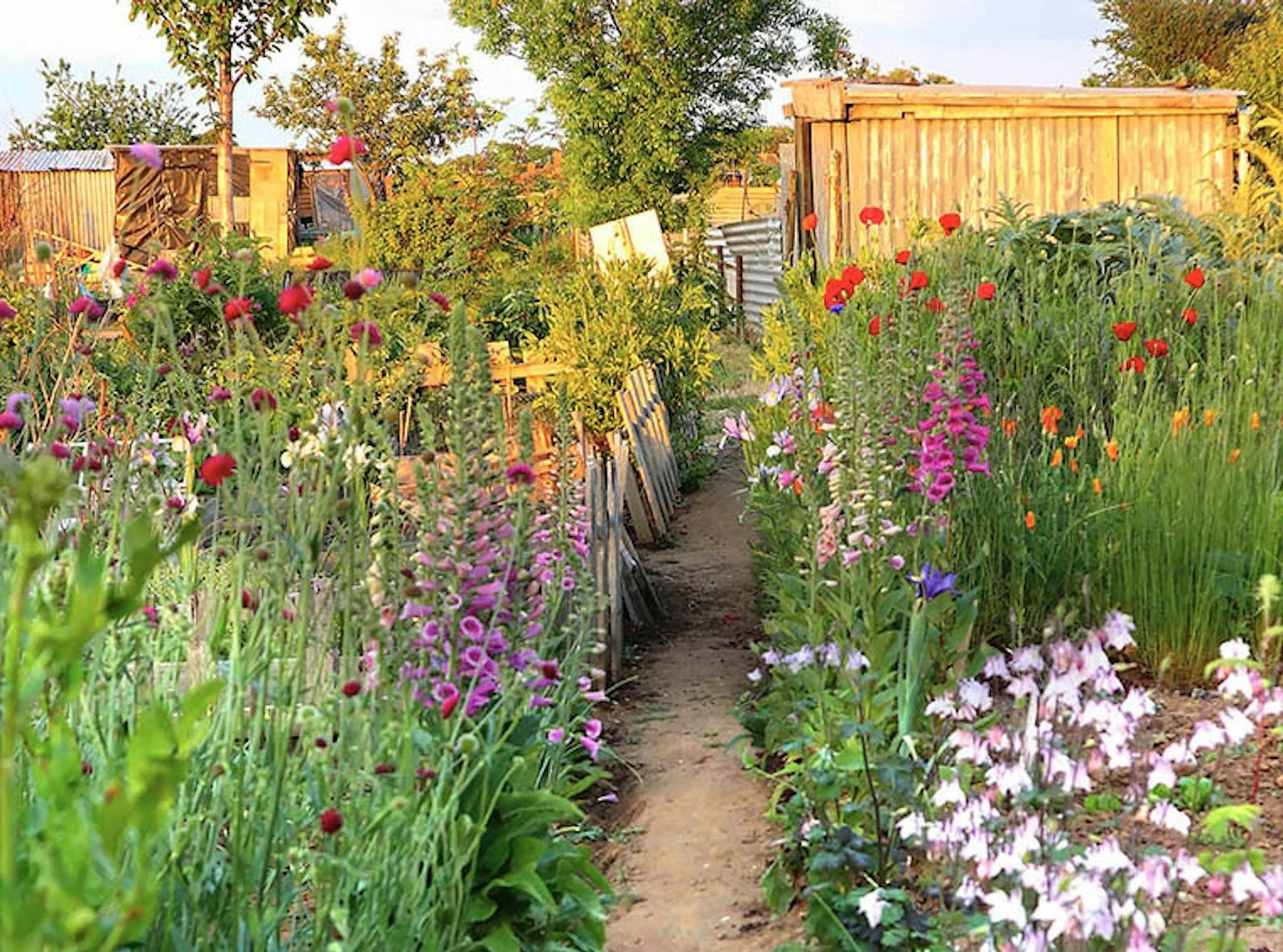It’s all pests and pesto this month, as Alice Whitehead shares her veg-patch diary, and explains why we shouldn’t get despondent about slug damage

May’s warmer nights and longer days are bringing new life to the veg plot – including pests. Battalions of slugs have already stormed my makeshift barricades and Aphid Command is refuelling on my tomatoes. It’s easy to become despondent.
Actually, I hate to use the word ‘pests’. Gastropods such as slugs are often regarded as the scourge of the seedbed, but in fact they do some valuable jobs: breaking down plant matter, dispersing seeds and mulching with their slug poop. Beetles and wasps are actually ‘winged pesticides’ that keep the real pests, such as aphids, under control.
I like to encourage and attract natural predators by providing shelter and habitats, such as butterfly feeders and ladybird houses, or simply just a stack of tree prunings.But even with the best intentions, it’s easy for your finely-tuned ecosystem to get out of balance – especially if climatic conditions conspire against you. If an infestation strikes, I’ll crush garlic and a drop of washing-up liquid into a pint of water and spray onto anything slugs, aphids or flea beetles enjoy. The pong puts them off.
Companion planting works by placing strong-smelling plants such as marigolds next to tomatoes, or onions and leeks near carrots to confuse the pest’s smell-based navigation system. A row of attractive sacrificial plants such as nasturtiums, next to ones I want to keep, such as cabbages, is a good way to divert cabbage whites, who lay their sunshine-yellow eggs on the leaf undersides, then I just pick them off.
Creating a barrier between the bug and your beloved crops can be a good deterrent, such as a ring of uncomfortably sharp egg shells, salty seaweed or wool pellets for slugs. Netting is my go-to to see off pigeons craving new green brassica shoots. To save money, I cut plastic hula-hoops in half and slot them over short canes inserted into the ground to form a tunnel frame. I fix net curtains from charity shops to the frame with wire, instead of buying costly mesh. This keeps birds at bay over summer, and by late autumn they’ve got bored and I free my cabbages from captivity. Opting for fast-growing plants that can withstand a few nibbles also helps.

My Pesto Plot is dedicated to this herbaceous sauce and while it’s a bit early for bags of basil, I freely tweak the recipe to include all kinds of greens, including overwintered rainbow chard. It’s sending up a beacon of shiny green leaves right now, with a hint of pink Brighton-rock along the stem. Red-tinged mizuna is also waking up under the cloche, alongside parsley and coriander.
Two fiery pesto ingredients that I’m sowing direct outside now are nasturtium and lovage. I love the flying-saucer leaves and sweet shop colours of nasturtium – and the whole plant is edible. Even the seeds can be picked like capers, though I end up saving a lot of mine for drying and re-sowing.
Lovage is also a much-underrated herb. It smells and looks a little like celery tops, but has a peppery, aniseed flavour, especially as it gets older. I love to whizz young leaves into pesto with cheese, garlic and nuts. One plant will do because it readily self-seeds and as a perennial it will reappear with delicious fresh leaves each year.
Another tasty but often overlooked leaf is radish, which can be sown pretty much anywhere, 1cm (½in) deep. They’ll be up in as little as 10 days. The leaves need to be snipped when young before they get too hairy – and, on my plot, before they’re ravaged by flea beetles. These tiny black beetles punch holes all over the leaves, leaving them lacy and brown. I’ll blend the unmottled greens with sweeter nuts such as almonds to counteract the spicy notes.
It’s not just pests that can dampen your gardening vigour. Modern-day gardeners have to contend with a whole world of comparison on social media. So often I ceremoniously serve up a single, hard-won sweetcorn with my family, only to look on Instagram and see someone has grown 40 fat cobs in three different colourways.
I say pop that phone away and revel in your quirky patch and produce – slug holes and all. Fruit and vegetables by their nature come in all shapes, sizes and colours. And various factors can impact growth. Hail stones might cause superficial bumps and blemishes, extreme heat produces colour variances and a couple of nights of freezing temperatures could turn the cloudy heads of cauliflowers purple.
Someone posting photos in southern England is also able to grow earlier, and potentially bigger, veg than growers north of the border. Polytunnels or heated greenhouses also help speed things along at the start of the year, which could leave outdoor growers feeling disheartened.
Even within my own allotment field, the soil conditions vary. I can’t grow tomatoes at my plot due to ongoing blight, but my neighbour always has a bumper crop. (This is where food swaps come in very handy!)
No two years are ever the same on the plot either, and over the 16 years I’ve had my allotment, I’ve learnt to shun perfection and embrace the ugly. After all, this variation is what makes our plots and produce unique – and engaging. And remember slow-grown, home-grown food always tastes better, whatever it looks like!
